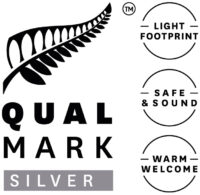2012 Vintage Report
Written by Nga Waka on August 7, 2012Growing season (Oct-Apr) data:
Rainfall (mm)
| Season | 11-12 | 10-11 | 09-10 | 08-09 | 07-08 | 06-07 | 05-06 |
|---|---|---|---|---|---|---|---|
| October | 110 | 40 | 63 | 70 | 88 | 126 | 67 |
| November | 87 | 29 | 53 | 11 | 28 | 61 | 18 |
| December | 113 | 25 | 49 | 91 | 74 | 60 | 41 |
| January | 76 | 76 | 114 | 7 | 16 | 31 | 24 |
| February | 36 | 11 | 17 | 121 | 29 | 10 | 37 |
| March | 111 | 85 | 45 | 35 | 39 | 44 | 67 |
| April | 70 | 103 | 7 | 37 | 98 | 43 | 61 |
| Totals | 603 | 369 | 348 | 372 | 372 | 375 | 315 |
Growing Degree Days (heat units)
| Season | 11-12 | 10-11 | 09-10 | 08-09 | 07-08 | 06-07 | 05-06 |
|---|---|---|---|---|---|---|---|
| October | 85 | 63 | 86 | 102 | 112 | 113 | 113 |
| November | 120 | 166 | 146 | 186 | 176 | 181 | 156 |
| December | 189 | 268 | 220 | 247 | 241 | 169 | 280 |
| January | 210 | 262 | 266 | 290 | 324 | 274 | 290 |
| February | 165 | 254 | 264 | 244 | 255 | 223 | 234 |
| March | 140 | 180 | 215 | 163 | 233 | 260 | 171 |
| April | 79 | 67 | 141 | 100 | 127 | 108 | 151 |
| Totals | 988 | 1259 | 1338 | 1332 | 1396 | 1328 | 1395 |
I’ve been scratching my head for some time trying to make sense of this season and I’m still largely clutching at straws to explain how the seasonal data above can have produced the quality of grapes, not outstanding but certainly good, solid quality, that came in to the winery at harvest. Small crops were a help but with growing season rainfall at nearly twice average and the coolest year since atmospheric ash from the 1991 Mt. Pinatubo eruption chilled the 1992 and 1993 vintages, the ripeness attained is remarkable. To further emphasise how cool this season has been, 2012 is, after 1992 and 1993, the only vintage not to reach 1000 growing degree day heat units, with the recent 10-yr average being closer to 1300 heat units.
Going back to the start of the season, the late winter chill, with snow on the ground for several days, left us nervous about a frosty Spring but we needn’t have worried as we barely had to warm up the frost fans over the critical Oct-Nov period. Cool, cloudy, damp conditions prevailed right through the growing season and by the end of March we were on a knife-edge as to whether we would keep the grapes in sound condition and whether they would ever ripen sufficiently to harvest. Thankfully, the cavalry arrived from the start of April with a beautiful 6-week spell of dry and, perhaps most importantly, sunny weather. If one short but heavy downpour of rain is excluded, April 2012 was the second driest April of the last 10 years. Heat units were still lower than average for April but the procession of clear, sunny days was the catalyst for the late season ripening that got the harvest over the line.
Botrytis was an issue in the Riesling block (and one Chardonnay block) but the dry spell allowed that to progress favourably for the production of our first “sticky” since 2004; it looks every bit as good as the excellent 2003 . Other than those two blocks Botrytis was not present and clean, ripe grapes were able to be harvested in the absence of disease pressure. Flavours in the aromatic varieties (S.Blanc and Riesling) are very expressive while the Chardonnay and P.Noir show good typicity and should produce balanced, elegant wines. A glance at the acid levels at harvest in the table below show the impact of the cool season; some deacidification was required and malolactic fermentation will be at higher levels than usual. I’m still amazed that sugar levels hit our target range naturally and that no chaptalisation was required, a small miracle.
Perhaps a small miracle is the best summary of vintage 2012, we certainly dodged a bullet and for that we all have cause to be thankful.
Cheers,
Here are the average harvest parameters for each variety:
| Variety | Brix | pH | Acidity (g/l) | Yield (t/ha) |
|---|---|---|---|---|
| Chardonnay | 2 | 3.25 | 10 | 5.75 |
| Pinot Noir | 24.5 | 3.5 | 9.5 | 5 |
| Riesling | 22 | 3.04 | 11 | 2 |
| S.Blanc | 22 | 3.1 | 11 | 10 |
Roger Parkinson
August 2012

